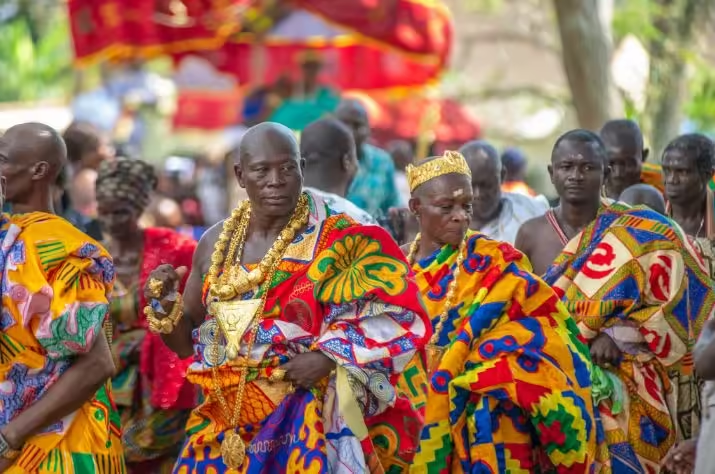The Fabric That Speaks: Why Kente Matters
More than just a textile, Kente cloth is a statement of heritage, craftsmanship, and identity. Worn by royalty and now embraced globally, this handwoven fabric tells a story of Ghana’s artistic legacy and cultural resilience. But beyond its vibrant colors and intricate patterns lies a deeper question—how does Kente continue to shape Ghana’s influence in the global creative economy?
A Symbol of Prestige and Meaning
Originating from the Ashanti Kingdom, Kente was historically reserved for kings and leaders, signifying power and prestige. Today, it represents a broader cultural identity, worn proudly at weddings, celebrations, and state events. Every weave has a meaning—gold signifies wealth, blue represents peace, and green symbolizes renewal. Patterns such as Dwennimmen (ram’s horns) reflect strength and humility, making Kente not just an attire, but a visual language of values and aspirations.

Beyond Tradition: Kente’s Global Influence
Kente has moved beyond Ghana’s borders, appearing in high fashion, academia, and even political arenas worldwide. The fabric has become a symbol of African pride, worn at international ceremonies and cultural festivals. But with its rise in popularity, mass production and counterfeit versions threaten its authenticity. Can Ghana’s artisans protect Kente’s legacy while expanding its economic impact?
The Future of Kente: Tradition Meets Innovation
As Ghanaian designers blend traditional Kente weaving with modern fashion trends, the industry is evolving. Ethical sourcing, digital storytelling, and global collaborations are redefining its market potential.
Will Kente remain a sacred cultural artifact, or is it on the path to becoming a global luxury brand? Share your thoughts—how should Ghana balance tradition and innovation in the future of Kente?



